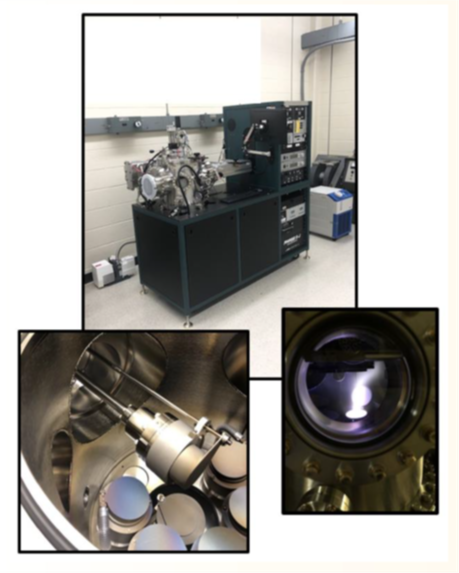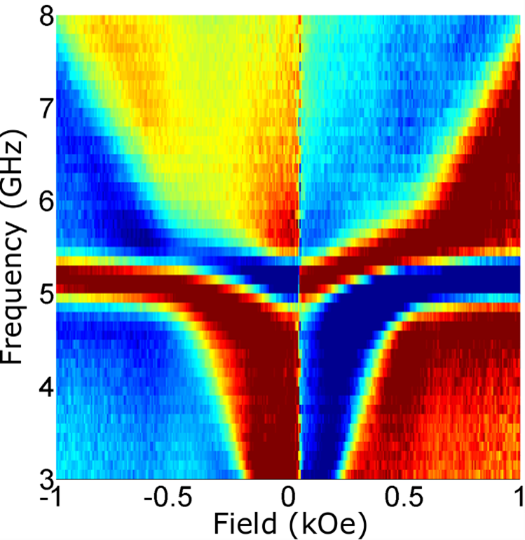Magnetization dynamics and hybrid magnonics

Dr. Joe Sklenar's group is focused on the synthesis, characterization, and modeling of magnetic metamaterials. Magnetic thin film hetero/nanostructures are grown using a versatile sputter deposition system. The materials are designed/engineered to have tunable interactions amongst the characteristic magnons (spin waves) that reside in the metamaterial.
Using magnetic resonance spectroscopy techniques, the magnon energy spectrum of a given material is measured at GHz, sub-THz, and even the THz scale. We interpret our results using micromagnetic simulations and through various coupled Landau-Lifshitz-Gilbert equations.
This research falls within the emerging field of hybrid quantum magnonics, where magnons are coherently coupled to other magnons, photons, and phonons. These various couplings will eventually allow quantum information processing and information transduction based on magnons. In our materials, the ability to control magnon-magnon interactions also allows for agile tuning of the magnon energy spectrum with electric current and the application of external magnetic fields. This fundamental research can lead towards new microwave and sub-THz device technologies, i.e. tunable filters.
Some recent reviews and book chapters we have co-authored
- Quantum Engineering with Hybrid Magnonics Systems and Materials
- Metallic Antiferromagnets
- Dynamics in artificial spin ice and magnetic metamaterials

Some of our recent research results
T. Jeffrey, W. Zhang, and J. Sklenar. Effect of dipolar interaction on exceptional points in synthetic layered magnets. Applied Physics Letters 118, 202401 (2021).
J. Sklenar and W. Zhang. Self-hybridization and tunable magnon-magnon coupling in van der waals synthetic magnets. Physical Review Applied 15, 044008 (2021).